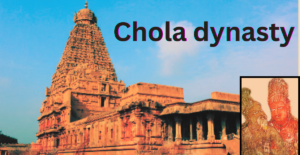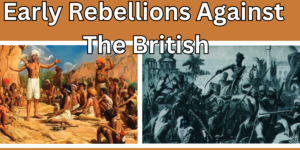Tughlaq Dynasty
Tughlaq Dynasty (1320-1414):
The Tughlaq dynasty, which spread from 1320 to 1414, found each of the rulers uniquely contributing to the history of the Delhi Sultanate.
Ruler | season | Important Events |
| Ghiyasuddin Tughlaq | 1320-1325 | Founded the Tughlaq dynasty |
| Muhammad bin Tughlaq | 1325-1351 | Extended the Delhi Sultanate to its greatest extent |
| Firoz Shah Tughlaq | 1351-1388 | Restored peace and order within the Delhi Sultanate |
| Ghiyasuddin Tughlaq Shah II | 1388-1389 | He ruled for a short period |
| Abu Bakr Shah | 1389-1394 | Stability restored within Delhi |
| Muhammad Shah Tughlaq | 1394-1413 | He was ruled as a puppet of Timur |
Ghiyasuddin Tughlaq (1320-1325):Tughlaq Dynasty
As he founder of the dynasty, Ghiyasuddin laid the foundation of the city of Tughlaqabad near Delhi.He strategically sent his son Jauna Khan for military campaigns against Warangal and Madurai. However, speculation is swirling about the ascendancy to the throne of Jauna Khan, who is believed by treacherous means.
Muhammad bin Tughlaq (1325-1351):
- Muhammad bin Tughlaq, also known as Jauna Khan, implemented significant reforms during his reign:
- It tried to shift the capital from Delhi to Devagiri (Daulatabad) for better control in the south. However, the move did not materialise due to water scarcity, which led to a return to Delhi.
- Following Chinese practices, the copper token currency was introduced, but later rescinded that decision due to rampant fraud.
- The increase in land revenue in the Dope area led to peasant revolts during a severe famine.
- Implemented agrarian reforms, provided corkkavi loans to peasants and established Diwan-i-Amir Kohi for agrarian affairs.
- Despite facing rebellions from nobles and provincial governors, Muhammad bin Tughlaq maintained diplomatic relations and showed tolerance in religious matters.
Firoz Shah Tughlaq (1351-1388):
- After the death of Muhammad bin Tughlaq, Firoz Shah Tughlaq became the Sultan whose rule focused strategically on the northern parts of India :
- Led unsuccessful expeditions to Bengal, resulting in the independence of Bengal from the control of the Sultanate.
- He attacked Jajnagar, Nagarkot and Datta and looted temples from temples.
- He revived the Iqta system, made it hereditary and implemented administrative reforms influenced by Islamic teachings.
- Jizya was imposed on non-Muslims showing intolerance towards Shia Muslims and Sufis.
- The irrigation tax was introduced and the construction of canals started, the 200 km canal from Sutlej to Hansi became long.
- It created state factories (karkhanas) employing thousands of slaves and established new towns, especially
- Diwan-i-Khayrat was founded to support orphans and widows, and patronized scholars such as Barani and Isami.
- Following the reign of Firoz Shah Tughlaq, the Delhi Sultanate faced disintegration and provinces such as Gujarat and Malwa declared independence. The Mongol invasion further weakened the sultanate , leading to its downfall. Firoz Shah Tughlaq left India in 1399, marking the end of the Tughlaq dynasty.
More about:Delhi Sultans
conclusion:Tughlaq Dynasty
The Tughlaq Dynasty, which ruled over parts of the Indian subcontinent from 1320 to 1414, left a complex legacy marked by both achievements and controversies. However, Muhammad bin Tughlaq’s abrupt policies such as the failed experiment of shifting the capital city, along with excessive taxation and military campaigns, led to economic instability and social unrest, contributing to the dynasty’s eventual decline.




